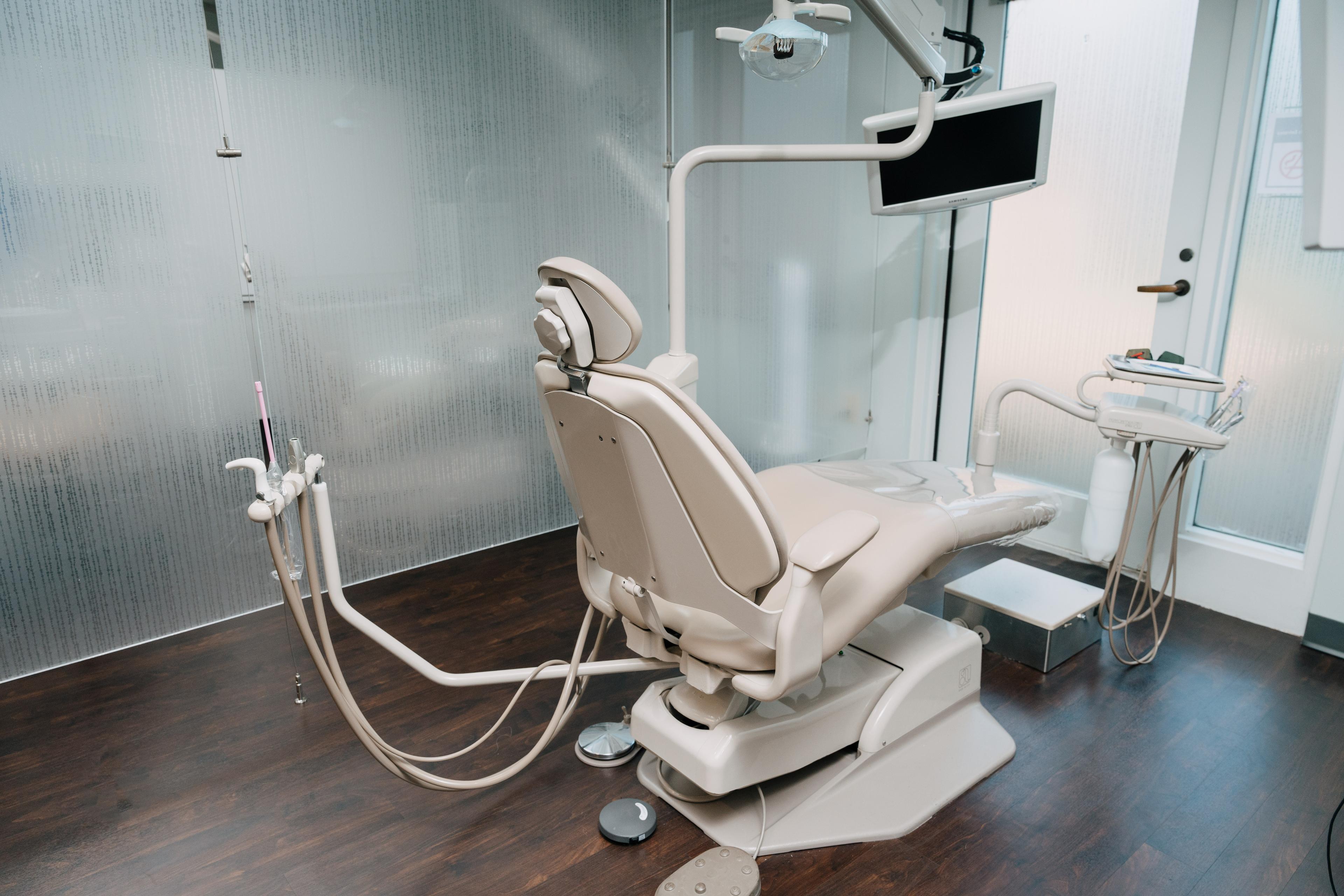Panorex
Digital panoramic x-rays, also known as a Panorex or orthopantomograms, are wraparound radiographs showing an ear-to-ear two-dimensional view of both the upper and lower jaw. A panoramic x-ray is not conducted to give a detailed view of each tooth, but instead shows the dentist a view of the head, neck, and jaw, and how they work together as a whole.
Digital panoramic x-rays are extraoral and simple to perform. The panoramic sensor rotates around the outside of the head and the x-ray images produced are an important diagnostic tool and are also valuable for planning future treatment. They can also aid the dentist evaluating the oral cavity as well as helping to identify cysts in the jawbone, tumors, tonsil stones, or sinus issues. Panoramic x-rays are also safer than other types of x-rays due to less radiation entering the body. Unlike bitewing x-rays that need to be taken regularly, panoramic x-rays are generally taken every 3 to 5 years.
A panoramic image allows the dental team to evaluate all the surrounding structures in the oral cavity. Cysts in the jawbone, tumors, tonsil stones, or sinus issues are all able to be detected in this image. Typically they are taken every 3-5 years. The team also uses this image to evaluate 3rd molars, or wisdom teeth, and children getting ready for braces.
Digital X-Rays
Digital x-rays allow the dentist to capture an image of a tooth or several teeth using an x-ray sensitive sensor and an imaging program. The imaging program contains various tools that give the dentist the ability to apply special processing techniques and real-time enhancement that aid the dentist in diagnosing any issues. Advantages of digital x-rays include cost effectiveness, time savings, as the doctor has immediate access to the image, and less radiation is used to produce the image; up to 80% less in some cases.
Intraoral Camera
Intraoral cameras allow you and the dentist to have a close-up analysis of the different structures inside your mouth. It also has a built-in light source which allows you and the dentist to see the external structures of the teeth, gums, and the buccal cavity. The intraoral camera can also be used to take videos and still images that can be used to show the condition of the teeth which helps in the assessment and diagnosis of plaque formation, dental cavities, gum disease, chipped or cracked teeth, broken dental fillings and other oral conditions.
Oral Cancer Screenings
Oral cancer screening is an examination that the dentist performs to look for signs of cancer or precancerous conditions in your mouth. The goal of a comprehensive oral cancer screening is to identify early abnormalities when there is a greater chance of curing the cancer. An oral cancer screening consists of two parts: a visual examination and a physical examination of the gums, palate, soft tissue, and tongue. Examining the face, neck, lips and inside of the nose are other big parts of oral cancer screenings. Early detection is crucial; if you’re a smoker or heavy drinker, it’s especially important to have regular screenings during your dental visits.
Oral cancer screenings are performed using an ultraviolet light or similar device, which allows dentists to view issues that the human eye wouldn’t normally be able to detect.
Your lifestyle choices play a key role in your overall oral health. If you’re a smoker or heavy drinker, it’s especially important to have regular screenings during your dentist visits.
E4D Same Day Crown
It’s quicker and easier than ever to restore your smile to its full potential.
Our team works hard to stay current on the latest advances in dental technology and techniques. We utilize state-of-the-art dental technology, including E4D. E4D technology allows our team to provide you with a custom-made, high-quality dental restoration in a single visit to our office. You will not need any temporary crowns, veneers, or other restorations. These one-visit restorations are created from high-quality porcelain that are matched to your natural tooth color, so your restorations will look beautiful and natural for years to come.
The Process
Just like a typical dental crown appointment, the dentist will perform any necessary fillings or root canals before preparing your tooth. To prepare your tooth, they will file it down so the crown can fit over it. The E4D system eliminates the hassle involved with traditional goop-based impressions by using specialized cameras to create a 3D digital model. The dentist will review this model on a computer to make sure it is accurate and select an appropriate color to match the rest of your teeth.
Once you are satisfied with the 3-D model, the E4D Same-Day Crown machine will take 10–20 minutes to mill your new crown. Since there are no impressions that need to be sent to a lab, you won’t have to deal with any troublesome temporary crowns while you wait. Your permanent crown will be placed as soon as the machine has finished milling it.
